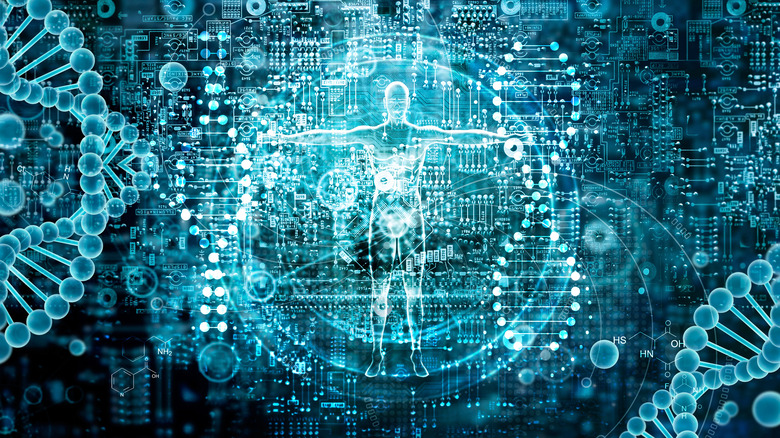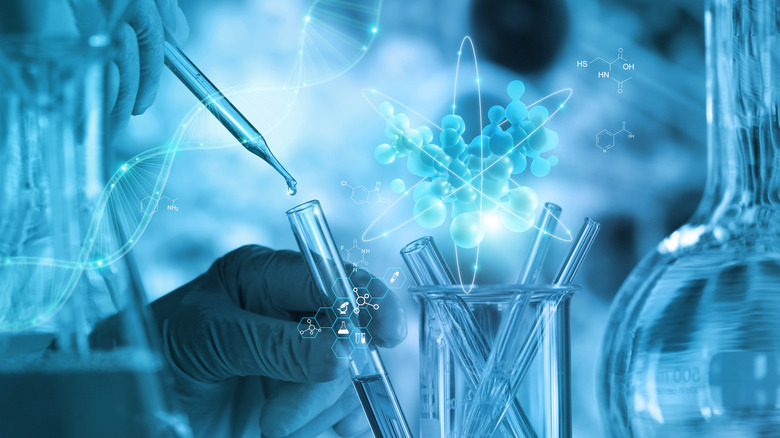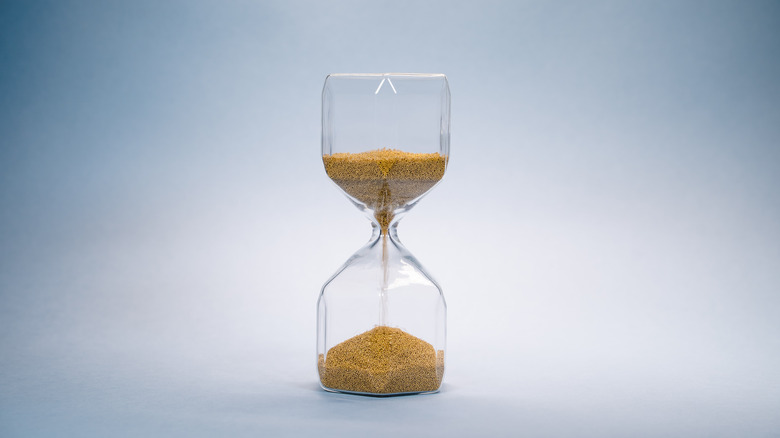Why Biological Immortality May Be Impossible
When Indiana Jones battled through Nazi hordes in 1989's "Indiana Jones and the Last Crusade," he was trying to find the Holy Grail. The Nazi commanders believed it would bestow them eternal life and grant them dominion over an everlasting Reich. Similarly, Voldemort in the "Harry Potter" books wanted the Philosopher's Stone, a fictional item or compound that could transform substances from an "imperfect temporal existence into one of spiritual perfection" and creates an "elixir of life," as the British Library says.
In an earlier incarnation of this root tale – the human quest for immortality – Spanish explorer Juan Ponce de Leon traveled to Florida in the 16th century in search of the "Fountain of Youth," as National Geographic explains. Filmmaker Darren Aronofsky modeled his script for 2006's "The Fountain" after this premise, and likened de Leon's fountain to the Tree of Life in the Garden of Eden in the Biblical Adam and Eve story. Drink from the sap, and live forever, but only after a very Faustian toll has been paid.
In fact, the very first piece of extant literature in the world — "The Epic of Gilgamesh," coming from Mesopotamia, written down around 2100 BCE — features the powerful and arrogant king Gilgamesh fearful of death and in search of immortality. The solution he finds? Make a name for himself while he's living. And now, in a modern, tech twist, we've got fiction about mind-uploads and eternal virtual copies.
But what of our bodies? Is it at all possible to live forever?
Medical procedures and new digital immortality fictions
Barring any discussions of whether or not folks would actually want to live forever — try to imagine eternity flowing ceaselessly, and you unable to excise yourself from it, even if you'd like — it seems as though the implicit drive of modern medicine has been to prolong life. Stem cell research, organ transplants, cybernetics and talk of nanotechnology, disease prevention and drug development, the wellness industry full of antioxidant products, even surface-level, appearance-driven procedures like face lifts: it's not just about improving "quality of life" for the living, or imitating the young as long as possible. It's about defying death.
As Yuval Noah Harari puts it in 2015's "Homo Deus," (summary lecture on YouTube), modern medicine treats death like a disease that can be fixed if only the machine of the body can be adequately maintained. Short of this, when would we stop? Hence the new technological bend to immortality tales – simulation theory, mind-uploading, digital consciousness – part wish fulfillment about forever-lives in a state of non-suffering, and part appropriation of fear about (and therefore conquering of) the exile of the self from the body in a digital age.
Are our medical efforts simply the byproduct of unproductive fear? Is "saving lives," as a plethora of medical and military dramas might put it, the highest value? Should we more wisely spend life accepting the inevitability of mortality and appreciating the brief light we shed in the cosmos?
The invariant rate of aging hypothesis is proven right
A June 2021 study can help illuminate our collective, and admittedly reasonable, preoccupation with staying alive. Medical Life Sciences reported on a massive, 42-institution-wide study across 14 countries that investigated whether or not there is some actual, physical threshold that human life cannot exceed. This theory, dubbed the "invariant rate of aging hypothesis," states that no matter how much we tweak and twist and tighten the body's valves, we've got a firm, baked-in, genetic cut-off date. Each species on Earth has a predetermined life expectancy, much like how each species has a different gestation rate before birth.
Lo and behold, this is exactly what the study discovered, led by associate professor at the Department of Mathematics and Computer Science, University of Southern Denmark, Fernando Colchero. Or as he said, "Human death is inevitable. No matter how many vitamins we take, how healthy our environment is or how much we exercise, we will eventually age and die." The study cross-referenced an "unpresented wealth of data" that incorporated non-human primate populations such as gorillas and chimpanzees.
Part of the issue with calculating mortality involves accounting for factors like car crashes, violent deaths, infant mortality, malnutrition, and the like. Human lifespan hasn't actually increased in the modern age. People tend to live longer simply because there is less of a chance of dying at an earlier age. We actually live in the healthiest, most war-free, prosperous time in human history, as sites like Vox state.
Tinkering with proteins, examining non-primates, and caring for the elderly
As if to corroborate our collective obsession with avoiding death, we've got numerous other perspectives, rebuttals, and counter-arguments.
The MIT School of Engineering, adopting a position that suits their name, describes how death "is a consequence of the accumulation of damage to an organism over time" such as "wear and tear on DNA," "chemicals in the environment," "radiation," and "copying errors." Eventually, tiny errors in protein structures and cell division lead a "gradual deterioration of tissues, or catastrophic disease and system shutdown." This article describes how tinkering with protein activity within cells could help prevent or slow such errors. This would basically help us defy the "invariant rate of aging hypothesis."
On National Geographic, professor of biology at the University of California, Riverside, David Reznick, discussed a study that sought to unravel some of the fundamental assumptions about death, including even the most basic assumption that mortality scales with age. He found that non-primate species like certain frogs and crabs don't necessarily pass through a young, fertile phase that gives way to an enfeebled, infertile older phase. Some species exhibit the same likelihood of dying over their entire lifespans, including the Hydra, a microscopic organism that lives up to 1,400 years.
In a practical, social sense, we're already strained to find ways to ensure the well-being of an ever-aging humanity. If everyone lives to 150, but from ages 90-150 is bedbound, then what's the point?
The possibility of reducing the rate of aging
An article on Elemental picks up the baton of these discussions and incorporates another point: Mortality plateaus after someone reaches 105. From the age of 105, every subsequent year doesn't increase the likelihood of dying. You've got a 50% chance at that point, year by year, and that figure doesn't vary by nationality, race, sex, or any other factor. Age 105 seems to constitute some threshold beyond which all the body's various death triggers have a much lower chance to go off. Death rates still increase dramatically up to age 80, though, which seems to jive with visions of grandma and grandpa hovering within the 80s.
Could this figure into an overall discussion of biological immortality? Are such elderly centenarian (folks over 100) outliers representative of what the entire population could achieve or aspire toward with the right amount of diet, exercise, and stressors? Genetic factors and physiological predispositions steer fate, but how much can we consciously turn the wheel?
Living to 200 is still a far cry from immortality, though. Fernando Colchero, head of the aforementioned study about the invariant rate of aging hypothesis, is dubious about even this prospect. On SciTechDaily he conceded only, "Medical science has advanced at an unprecedented pace, so maybe science might succeed in achieving what evolution could not: to reduce the rate of aging." In the meantime, we've got our steady diet of fictions about virtual worlds and digital immortality to sustain us.




